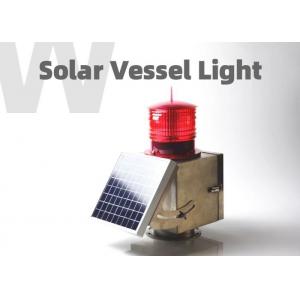

Add to Cart
Port And Starboard Boating Navigation Markers
Boaters call navigation rules – the basic laws governing the steering or sailing of a boat –“The Rules of the Road.” The Rules of the Road define the roles and responsibilities of vessel operators. If all operators obeyed these rules, most accidents could be avoided. One of the reasons the Rules of the Road exist is to keep boats from colliding with each other and with other objects. Since collisions are the number one type of accident on the water, boaters should remember the following Rules of the Road.
SPECIFICATIONS
Port And Starboard Boating Navigation Markers | |||
| Mechanical Specifications | Electrical Specifications | ||
Peak Intensity | 1500`2500cd adjustable | Structure | Solar Integrated Design Bird deterrent conjoined with lens for not easy to break |
Working Model | Steady On | Lens Material | Polycarbonate |
Protect Level | IP68 | Solar Panel | 4W * 4pcs mono |
Energy Manage System (EMS) | Intelligent Microprocessor | Storage Battery | 12.8V4AH LiFePO4 battery |
Temperature | -45℃~70℃ | Function Optional | Location |
Continuous Working Hours | 250hours | Mounting | 4 bolts M6 for Mounting |
Automatic Light Control (ALC) | Turn on at night and off at daytime automatically | Light Angel | 112.5°Red + 112.5°Green + 135°White=360° |
Post a lookout. Designate someone to watch for dangers that may come from any direction.
Maintain a safe speed. Except where speed is restricted by regulation or the waterway is
marked by a “No Wake” or “Slow Speed” Aid, you must judge “safe
speed” for yourself, taking into account visibility, vessel
traffic, your boat’s ability tomaneuver, and the weather
conditions.
Avoid a collision. The Rules of the Road include the actions to take when
encountering another vessel on the water. Some of the most common
situations you may encounter are: overtaking, meeting head on, and
crossing the bow of another vessel. In each case, the boat
designated as the “give-way” vessel is required to yield to the
other boat, while the boat designated as the “stand-on” vessel
should maintain its course and speed.
Action(s): The give-way vessel (bottom) can pass on either side of the stand-on vessel (top).
Sound signals, inland: Passing portside requires two short (1-second) blasts on the horn signaling the overtaking boat’s intention, and two short blasts for the stand-on vessel’s agreement. Passing to starboard requires one short blast for intent and agreement.
Sound signals, international: Passing portside requires two prolonged (4-6 seconds) and two short blasts for the overtaking boat’s intention, two short blasts for the stand-on vessel’s agreement. Passing to starboard requires two prolonged and one short blast for intention. An agreement signal is only required when operating in a narrow channel or fairway; then the following blast pattern signals your agreement: one prolonged/one short/one prolonged/one short.
NOTE:
STANDARD
